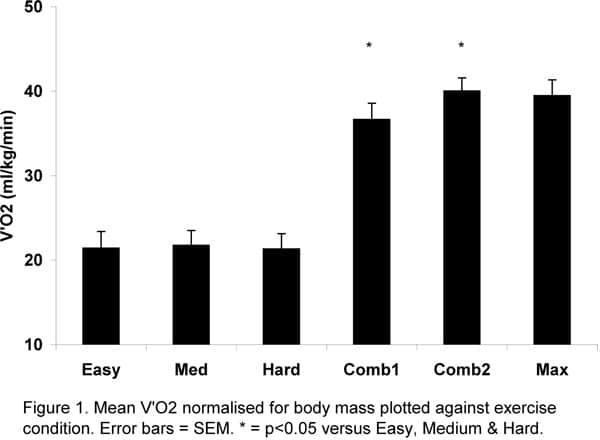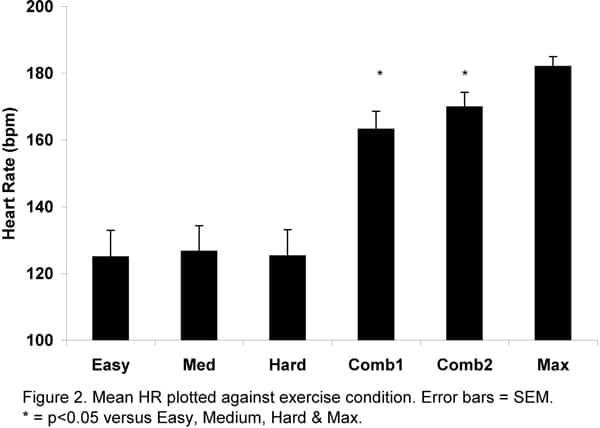Excessive video game playing has been blamed for the increased prevalence of childhood obesity. Recent developments in the video games industry have resulted in a variety of novel games controllers which require the use of body movement in order to play the games. More specifically a game entitled “Eyetoy Kinetic” has been developed for the Sony Playstation 2 console, providing various games and a personal training programme aimed at improving cardiovascular fitness, muscle tone, balance and coordination. To assess whether or not such a video game would provide a useful adjunct to promoting physical activity and weight control, it is necessary to evaluate the intensity of physical exertion the game demands of the participant. On the first occasion, 16 subjects (8 male) mean (±SD) 20.3±2.4 years, height 1.76±0.10 m and body mass 72.7±12.8 kg undertook an incremental exercise test on a cycle ergometer (Monark 874E) to volitional exhaustion. Respiratory gas analysis was performed using a portable telemetric system (Jaeger Oxycon Mobile) including a heart rate monitor (Polar Electro). Subjects also undertook familiarisation trials with the Minnesota Dexterity test (Two-Hand Turning and Placing test) and a 30 s postural stability test on a balance platform. They also played the two games “Cascade” – 10 mins aerobic workout and “Sidewinder” – 3 mins all out maximal exertion. On the second occasion, 3 trials of the dexterity and stability tests were performed. Subjects then undertook three 10 mins bouts of the “Cascade” game of ascending difficulty (Easy, Medium & Hard) and then two 3 mins bouts of the “Sidewinder” (Comb1 & Comb2) game. Subjects had 5 mins rest between bouts. Heart rate (HR) and gas exchange variables were monitored telemetrically throughout the exercise periods. HR and oxygen uptake (V’O2) normalised for body mass were averaged over the second half of each bout for the “Cascade” game. For the “Sidewinder” game and the V’O2max test, the highest 30 s average was taken. Statistical analysis was performed using correlation and ANOVA. Manual dexterity score was significant correlated with the game score in the second bout of “Sidewinder” (p<0.05). The was no correlation between postural stability and any game scores. Peak V’O2 in the “Sidewinder” game was significantly higher versus the “Cascade” game but not significantly different from V’O2max (Fig 1). Peak HR in the “Sidewinder” game was both significantly higher versus the “Cascade” game and lower than that at maximal exercise on the cycle ergometer (Fig 2). These results indicate that in a group of young adults, the physical exertion required to play the games studied is significant and may provide a novel way to promote increased levels of habitual physical activity.
Life Sciences 2007 (2007) Proc Life Sciences, PC438
Poster Communications: Evaluation of physical exertion required to play the body movement controlled Eyetoy Kinetic video game
A. G. Thin1, D. Howey1, L. Murdoch1, A. Crozier1
1. School of Life Sciences, Heriot-Watt University, Edinburgh, United Kingdom.
View other abstracts by:
Where applicable, experiments conform with Society ethical requirements.


